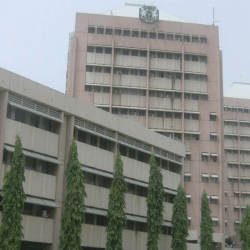The Nigerian public service salary system has a structured approach, organized into different consolidated salary structures tailored for specific sectors and roles. These frameworks ensure uniformity, fairness, and competitiveness in employee compensation across various public service areas. Here’s a detailed look at each of the key salary structures in Nigeria:
The salary structures aim to balance fairness, job satisfaction, and competitive compensation across various sectors. These structured salary scales help establish transparency, accountability, and reward in public service careers.
1. Consolidated Public Service Salary Structure (CONPSS)
The Consolidated Public Service Salary Structure (CONPSS) is the standard pay structure for federal and state government employees working across ministries, departments, and agencies that don’t fall under specialized categories like health, education, or paramilitary.
- Job Categories: This structure covers administrative, clerical, and technical roles in the general public service.
- Salary Grades and Steps: Employees under CONPSS are assigned grades and steps that dictate their salary, with annual increments based on step progression.
- Allowances: Additional allowances are provided based on job role, seniority, and location.
2. Consolidated Para-Military Salary Structure (CONPASS) and Police Salary Structure (CONPOSS)
Overview: CONPASS (for general paramilitary personnel) and CONPOSS (specifically for police) were created to provide a competitive and uniform salary structure for Nigeria’s paramilitary forces.
- Applicable Organizations: Includes personnel in agencies like the Nigerian Police Force, Nigeria Immigration Service, Nigeria Customs Service, and Nigerian Prisons Service.
- Rank-Based Structure: Salaries vary significantly based on rank, from lower ranks like Constables and Inspectors to higher ranks such as Commandants and Commissioners.
- Allowances: Includes special allowances like uniform maintenance, risk and duty allowances, particularly for personnel serving in high-risk areas.
3. Consolidated Tertiary Institutions Salary Structure (CONTISS II)
Overview: The Consolidated Tertiary Institutions Salary Structure (CONTISS II) is a specific pay structure used in Nigerian tertiary institutions, covering non-academic staff.
- Scope: Applies to support staff in federal and state universities, polytechnics, and colleges of education.
- Salary Grades: Ranges from lower levels for junior staff to higher grades for senior administrative and technical personnel.
- Promotion-Based Increments: Progression is typically based on years of service, performance, and additional qualifications.
4. Consolidated Research and Allied Institutions Salary Structure (CONRAISS)
Overview: CONRAISS is tailored for professionals in research and allied institutions across Nigeria, including scientists, technologists, and researchers.
- Institutions Covered: Applies to staff in research institutes and centers under various ministries.
- Salary Determinants: Includes experience, qualification, and level of specialization.
- Research Allowances: In addition to standard salaries, researchers often receive allowances for fieldwork, travel, and special project needs.
5. Consolidated Medical Salary Structure (CONMESS)
Overview: The Consolidated Medical Salary Structure (CONMESS) is exclusively designed for medical professionals working in public hospitals and health facilities.
- Professionals Covered: Applies to doctors, dentists, and other qualified medical practitioners.
- Salary Levels and Progression: Based on ranks such as Medical Officer, Senior Registrar, Consultant, etc.
- Allowances:
- Hazard Allowance: Compensates for the risks associated with medical work.
- Call Duty Allowance: Applies to doctors who work on-call shifts outside regular hours.
6. Consolidated Health Salary Structure (CONHESS)
Overview: CONHESS serves other health professionals not covered by CONMESS, such as nurses, pharmacists, and lab scientists.
- Personnel: Includes all healthcare workers aside from medical doctors.
- Salary and Career Structure: Structured into grades with allowances, promotions, and pay adjustments based on tenure and qualification.
- Key Allowances:
- Shift Allowance: For health workers who work rotating shifts.
- Hazard Allowance: Compensates for the inherent risks of the healthcare profession.
7. Consolidated Universities Academic Staff Salary Structure (CONUASS II)
Overview: Designed for academic staff in Nigerian universities, CONUASS II ensures competitive pay and career growth for lecturers, professors, and researchers.
- Roles Covered: From Graduate Assistants to Professors.
- Salary Increments: Includes step-wise increases within academic ranks based on years of experience, research output, and academic achievements.
- Allowances: Academic allowances, research grants, and allowances for external responsibilities like thesis supervision.
8. Consolidated Polytechnics and Colleges of Education Academic Staff Salary Structure (CONPCASS)
Overview: CONPCASS applies specifically to the academic staff in polytechnics and colleges of education.
- Academic Ranks: From Assistant Lecturers to Chief Lecturers.
- Increments and Promotion: Step-based salary progression and regular promotions for career development.
- Special Allowances: Research and training allowances to promote professional growth.
9. Consolidated Tertiary Educational Institutions Salary Structure (CONTENDISS)
Overview: CONTENDISS is for non-teaching staff in tertiary institutions, providing structured pay and allowances for administrative and support roles.
- Job Scope: Includes clerical staff, administrative officers, and technical support in tertiary educational institutions.
- Salary Scales and Grades: Organized into multiple grades with annual step increments.
- Allowances: Location-based allowances and housing benefits are often included.
National Salaries, Incomes and Wages Commission (NSIWC)

The National Salaries, Incomes and Wages Commission (NSIWC), established by Decree No. 99 of 1993—now recognized as Cap N72 in the Laws of the Federation—was created to oversee and address various aspects of compensation within Nigeria’s Federal Public Service.
NSIWC’s core functions encompass handling remuneration-related matters, administering the National Minimum Wage, reviewing Federal Public Service pensions, conducting research into public service pay structures, and managing comparability surveys and salary administration regulations across the country.
Q1: What is the purpose of Nigeria’s consolidated salary structures?
Nigeria’s consolidated salary structures provide organized, sector-specific pay scales to ensure equitable, competitive, and standardized compensation for public servants.
Q2: Who falls under the CONMESS salary structure?
The CONMESS structure is specifically for medical doctors and practitioners in public health services.
Q3: What type of allowances are available under CONHESS?
CONHESS includes allowances like shift and hazard allowances, primarily for nurses, pharmacists, and lab scientists.
Q4: How does CONTISS II differ from CONUASS II?
CONTISS II is for non-academic staff in tertiary institutions, while CONUASS II is for academic staff in Nigerian universities.
Q5: Are allowances standardized across all salary structures?
No, allowances vary based on the structure and specific sector needs, such as hazard allowances in health sectors and research grants in academic fields.
Q6: How is the salary progression determined under these structures?
Salary progression typically follows a step-wise increase based on years of service, performance, and attainment of additional qualifications.



